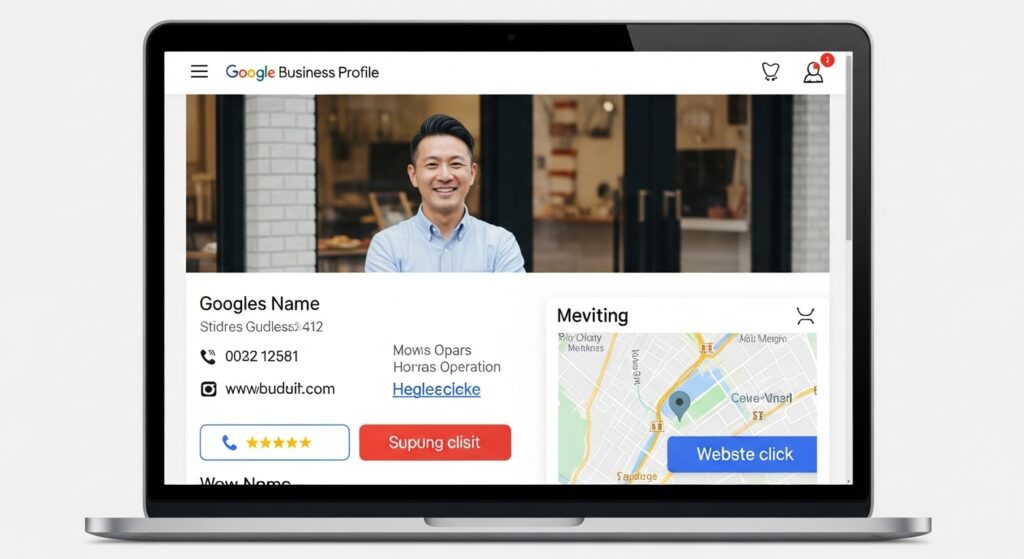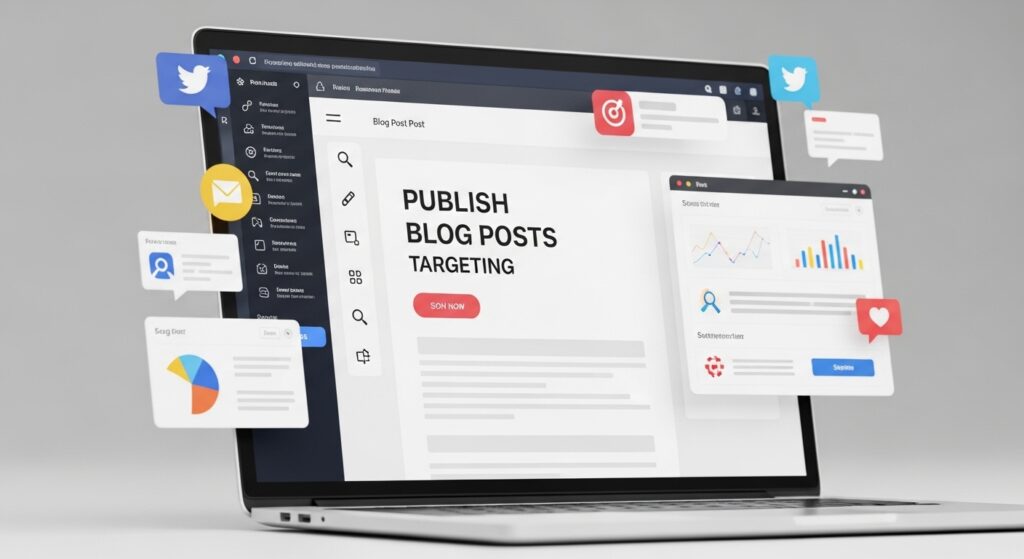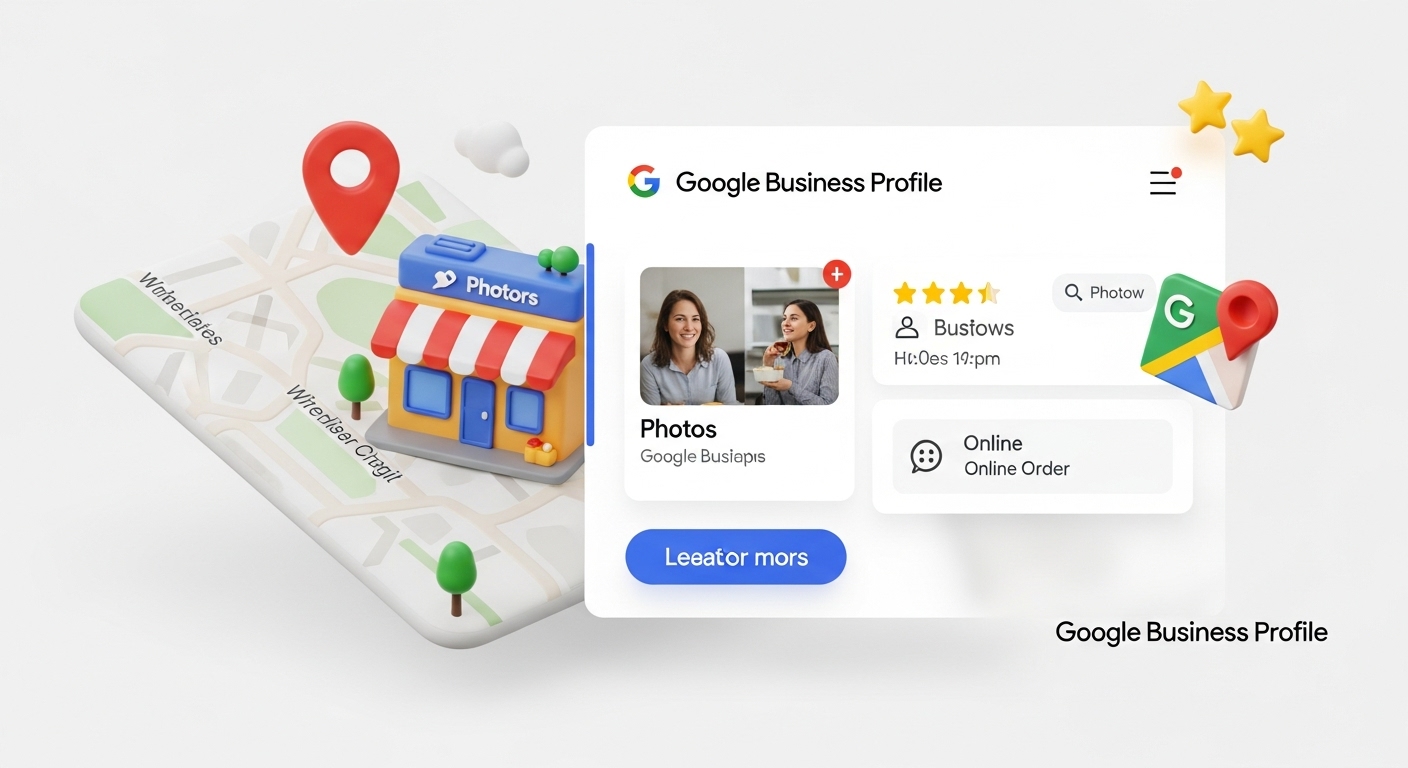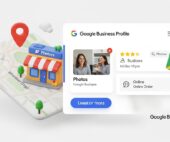In the current digital marketing landscape, one of the most overlooked yet powerful tools for small and local service businesses is the Google Business Profile (GBP). Formerly known as Google My Business, this free tool can significantly enhance your local visibility, drive targeted traffic to your website, and most importantly—convert that traffic into real revenue.
In this blog post, we’ll walk through an advanced strategy that combines GBP optimization, deep keyword analysis, and content marketing to help you stand out in your local area—even if you’re just getting started.
Why Google Business Profile Matters
As of 2025 & 26, more than 60% of all Google searches have local intent. That means users are actively looking for services “near me” or within their city. Google prioritizes local results, especially in mobile searches.
Here’s what a properly optimized Google Business Profile offers:
- Direct visibility in Google Maps and Search
- Display of customer reviews, star ratings, photos, and operating hours
- Contact options like call, directions, website link, and messaging
- Enhanced local credibility and trust
Unlike ads or even SEO-heavy websites, GBP allows you to compete with larger brands—without spending thousands on marketing.

Step 1: Identify the Right Keyword Opportunity
The secret sauce to leveraging GBP for organic traffic is starting with smart keyword research.
Instead of simply targeting broad terms like “plumber” or “electrician,” you should look for long-tail keywords with:

- Good search volume (e.g., 500–5,000 per month)
- Low SEO difficulty
- Little to no competition from existing Google Business Profiles
- Relevance to your physical or service-based business
Example:
Suppose you provide “mobile car detailing in Rawalpindi.” Using a tool like Ubersuggest, Ahrefs, or even Google’s free Keyword Planner, you might discover the following:
- “Mobile car detailing california” – 1,000/month – Low difficulty
- “Hotel service japan” – 500/month – Low competition
If you run a manual check on Google and see that there is no optimized GBP listing on top for this keyword, you’ve just found a golden opportunity.
Step 2: Optimize Your Google Business Profile Strategically
Once you’ve identified the focus keyword (e.g., “mobile car detailing pakistan”), it’s time to build or improve your GBP.

Key Optimization Tips:
- Business Name:
Use your official brand name only, but add keywords subtly if it’s part of your brand (avoid keyword stuffing). - Primary Category:
Choose the most relevant service (e.g., “Car detailing service”). - Description:
Write a compelling 750-character business description. Include your focus keyword 4–5 times max. - Services & Products:
List all your offerings. You can add detailed descriptions for each one. - Photos & Videos:
Upload real, high-quality visuals of your workspace, team, and work samples. - Posts:
Use the GBP “Posts” feature to share updates, blogs, and promos weekly using semantic keywords. - Q&A Section:
Add frequently asked questions and provide helpful answers. Google indexes this content. - Reviews:
Encourage satisfied clients to leave reviews. Respond to each review using natural variations of your focus keyword.
⚠️ Pro Tip: Never exceed 5 uses of the same keyword in any section to avoid keyword stuffing. Instead, use LSI and semantic alternatives like:
- “Local car cleaning”
- “Auto detailing service near me”
- “Hotel service pakistan”
Step 3: Publish Blog Posts Targeting Low-Authority Keyword Niches
If your business website is new or low in authority, traditional SEO might feel slow. That’s why your blog strategy should focus on low-authority gaps—keywords where weak content is already ranking.

How to Find Such Keywords:
- Use Ahrefs to filter keywords with:
- Keyword Difficulty: under 20
- DR (Domain Rating) of top 10 results: under 30
- Look for informational keywords related to your core services
Blog Ideas Based on This Strategy:
- “How to choose a reliable AC technician in uk”
- “5 signs your car needs professional detailing”
- “Why local businesses should optimize Google Business Profile in 2025”
Content Strategy:
- Use the focus keyword 4–5 times only
- Include internal links to your service pages and GBP profile
- Add semantic keywords throughout to improve topic relevance
- Write in a way that solves user problems, not just ranks in Google
Match Keyword Intent with Content Format
Not all keywords serve the same purpose. Understanding user intent will make your content more valuable and less likely to bounce.
| Intent Type | Example | Best Content Type |
|---|---|---|
| Informational | “How to detail your car at home” | Blog post, guide |
| Navigational | “AutoDetailer York reviews” | GBP, testimonial page |
| Transactional | “Book car detailing Los Angeles” | GBP call-to-action, landing page |
When content matches intent, you build trust, reduce bounce rate, and increase conversion.
Avoid Keyword Stuffing & Build for Real Users
Here’s what modern SEO demands:
- Use the focus keyword 4–5 times in total
- Use semantic alternatives naturally: “local SEO”, “Google Maps business listing”, “service-based traffic”
- Create content with real value—don’t just write for Google
Your blog should feel like it’s written for humans, not algorithms. This helps with both ranking and retention.
Add Value with Deep Content and FAQ Integration
Depth wins. Google favors thorough, complete posts that answer all potential user queries.
Add these FAQs to boost content usefulness:
A: Yes, if optimized well and paired with keyword targeting, GBP can generate calls, messages, and reviews organically.
A: No. It’s penalized by search engines and creates poor user experience. Focus on value and intent.
A: Typically 1–3 weeks if no competitors exist. Optimized content and regular updates help you stay at the top.
A: Yes, but focus on one main keyword per GBP and blog. Use others as semantic support.
Real-World Example Strategy
Let’s say you’re a home cleaning service in china. You find the keyword “deep house cleaning united states” has:
- 3,000 searches/month
- No GBP-optimized listings
- Blog posts ranking with low DR
Action Plan:
- Create a Google Business Profile using that keyword in the description and post titles
- Write a blog titled “Why Deep House Cleaning in Australia Matters After Monsoon Season”
- Use variations like “spring cleaning Germany” or “home cleaning services in Germany” within the content
- Share that blog post through GBP “Posts” every week
- Ask customers to leave reviews mentioning “deep house cleaning”
Future of Google Business Profile SEO
As Google continues to enhance local-first search experiences, GBP is only becoming more influential. Future updates will likely include:
- Richer photo/video content
- Direct product/service booking
- Google Messaging improvements
Prediction for 2025–2026:
Businesses with optimized GBP, high-quality blog content, and keyword-driven service pages will dominate local search—and grow organically without ads.
Final Checklist & Summary
| Task | Details |
|---|---|
| ✅ Focus Keyword | Use “Google Business Profile traffic” 4–5 times |
| ✅ Keyword Research | Find long-tail keywords with low GBP competition |
| ✅ Google Business Profile | Optimize for service and location |
| ✅ Content Depth | Write blogs that fully solve user needs |
| ✅ Semantic Support | Use related terms to avoid repetition |
| ✅ FAQs | Add user-driven questions and answers |
| ✅ Avoid Stuffing | Write for people, not bots |
Conclusion: Start Now, Win Later
If you’re running a local or service-based business, the time to leverage Google Business Profile and SEO is now. These tools are free, underused, and incredibly powerful when combined strategically.
By analyzing keywords, optimizing your GBP, and writing valuable content:
- You attract real, local traffic
- You build trust and credibility
- You increase sales and service inquiries
Start small, stay consistent, and watch your visibility grow—organically. Ready to grow your services? Book a meeting and get started today.





